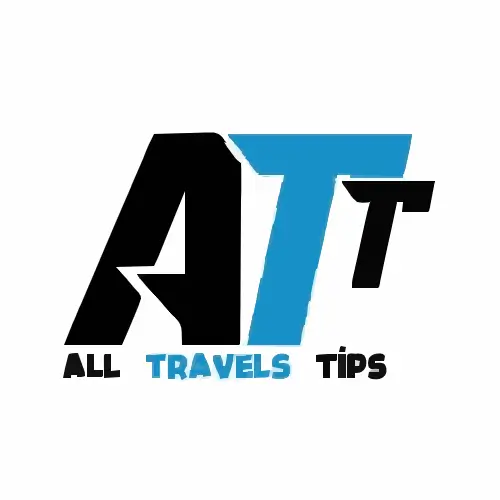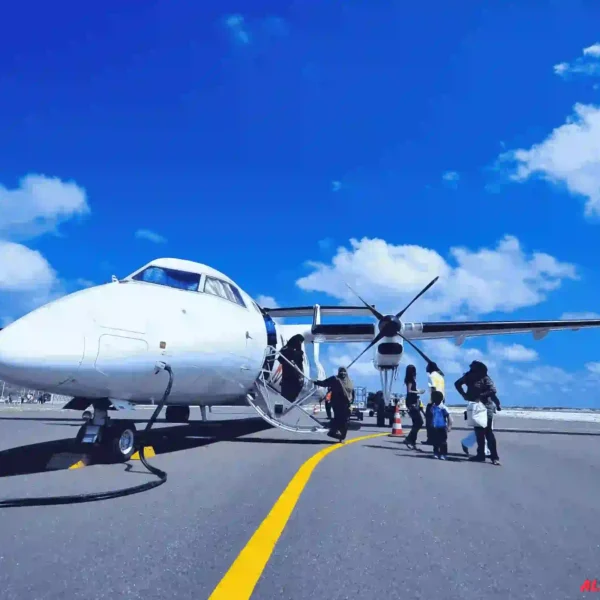Planning a trip is exciting, but it can also feel overwhelming without the right preparation. From choosing the perfect destination to packing efficiently, every detail matters for a stress-free and memorable adventure.
In this 2025 Travel Planning Essentials Guide, you’ll discover proven tips, tools, and strategies to streamline your travel planning process. Whether you’re a first-time traveler or a seasoned explorer, this guide ensures you’re fully prepared to enjoy every moment of your journey.
Why Is Travel Planning Important?
Planning your trip is the foundation of a successful and stress-free journey. Here’s why travel planning matters for a stress-free trip:
- Saves Time and Reduces Stress: A well-thought-out plan helps you avoid last-minute rushes, giving you peace of mind and allowing you to focus on enjoying your trip.
- Maximizes Budget Efficiency: Planning ahead lets you track expenses, avoid overspending, and helps you find the best deals and discounts.
- Ensures Smooth Travel Experience: From booking flights to accommodations, planning minimizes the chances of unexpected hiccups.
Without a clear plan, even the most exciting destination can turn into a chaotic experience. According to a 2024 survey by Expedia, 67% of travelers experience last-minute stress due to poor planning, often leading to unexpected costs and missed opportunities. By investing time in travel planning, you can transform your trip into a memorable and hassle-free adventure. Check out How to Create a Travel Budget for 2025 to avoid breaking the bank.
Travel Planning Essentials: A Step-by-Step Guide
How to Plan a Trip Step by Step? Follow these 5 simple steps for a stress-free trip:
- Research your destination.
- Set a travel budget.
- Create a flexible itinerary.
- Pack smartly and prepare travel documents.
- Book flights and accommodation.
By following these 5 steps, you will able to make your trips stress free. Lets dive into each step in detail and How to plan a trip checklist one by one.
1. Research Your Destination: A Travel Preparation Checklist
Before you pack your bags, take the time to researching your destination. Understanding the culture, climate, local attractions, and travel requirements will help you plan smarter and avoid unexpected surprises.
How to Choose the Right Destination
Choosing the Perfect Destination for 2025 is now easy. Not sure where to go? Ask yourself these key questions to find the perfect travel spot:
- What’s Your Travel Goal?: Adventure, relaxation, cultural exploration, or a mix? Then choose a destination that aligns with your interests.
- What’s Your Budget?: Some destinations are more budget-friendly than others, so choose one that aligns with your financial plan.
- What’s the Best Time to Visit?: Research peak and off-peak seasons to save money, avoid crowds, and enjoy best weather.
Best tools to research travel destinations
- Google Maps: Explore locations, attractions, and distances with street views and local insights.
- Nomad List: Compare cities worldwide based on cost of living, weather, safety, and digital nomad-friendliness.
- Lonely Planet: Discover expert travel guides, city recommendations, and cultural insights.
- TripAdvisor: Read traveler reviews, see top-rated destinations, and compare attractions.
Tip: Use Google Trends to check destination popularity and Rome2Rio to map out travel routes and transportation options. Using a detailed trip planning guide ensures you don’t miss any important details before your journey.
💡 Pro Tip: For inspiration, explore travel blogs, forms or social media hashtags related to your interests for first-hand experiences. Before finalizing your travel destination, check government travel advisory sites like travel.state.gov for visa and safety information.
2. Set a Budget: Essentials for Stress Free Trip
Your budget sets the tone for your entire trip. So, setting a budget is the key to enjoying your travels without financial stress. Consider factor in major expenses like flights, accommodations, meals, and activities to stay on track.
Budget Breakdown
- Flights: 30-40%
- Accommodation: 20-30%
- Food & Drinks: 10-20%
- Activities & Shopping: 10-20%
Budgeting and Cost Management for Travelers
Traveling on a budget doesn’t mean compromising on experiences. How to budget and manage travel costs effectively. Follow these expert tips to control costs and make the most of your trip: Here’s how to stick to your budget:
- Track Your Expenses: Use budgeting apps like Trail Wallet, Spendee, or Mint to monitor spending and avoid overspending.
- Find Free or Low-Cost Activities: Many destinations offer free museum days, public parks, cultural festivals, and walking tours that let you explore without spending a dime.
- Eat Like a Local: Street food and local markets offer authentic meals at a fraction of the cost of touristy restaurants.
Budget Travel Hacks to Save More
- Use Travel Credit Card Rewards: Earn cashback, points, or miles to cut flight and hotel costs.
- Book Flights at the Right Time: Use tools like Google Flights, Skyscanner, and Hopper to track price drops and book when fares are lowest.
- Take Advantage of Travel Discounts: Sign up for student, senior, or loyalty program discounts to save on accommodations, transport, and attractions.
Save money on flights by using travel credit cards that offer cashback or reward points. Websites like Skyscanner and Google Flights allow you to track ticket prices and book at the best time.
💡 Pro Tip: Want the cheapest flights? Search in incognito mode, book mid-week, and be flexible with dates for the best deals.
3. Create a Flexible Itinerary for Stress Free Trip
A well-planned itinerary helps you maximize your trip. Plan your days with a mix of must-see attractions and leisure time within your budget. However, keeping it flexible allows for spontaneous adventures, local discoveries, and unexpected opportunities that can make your journey even more memorable.
How to Plan a Flexible Itinerary for a Stress-Free Trip
- Prioritize Must-See Attractions: List key places you don’t want to miss.
- Leave Room for Spontaneity: Avoid overpacking your schedule—allow time for unexpected experiences.
- Consider Travel Time: Factor in transportation to avoid rushing between locations.
- Balance Activities & Rest: Mix sightseeing with leisure to avoid travel burnout.
Sample Budget Itinerary template
Here’s a 3-day sample itinerary for a budget-friendly trip to Thailand:
📌 Day 1:
- Visit Grand Palace, explore street food scene in Bangkok.
- Take a boat ride along the Chao Phraya River for scenic views.
📌 Day 2:
- Take a budget-friendly day trip to Ayutthaya, a UNESCO World Heritage Site.
- Rent a bike and explore ancient temples at your own pace.
📌 Day 3:
- Fly or take a budget bus to Phuket for a relaxing beach day.
- Explore local night markets for affordable souvenirs and food.
💡 Pro Tip: Use apps like Google My Maps to plan routes and mark must-visit spots. Explore the complete Thailand trip guide if you are planning to go Thailand.
4. Pack Smartly: Essentials for Stress Free Trip
Packing efficiently can save space, reduce stress, and help you avoid unnecessary baggage fees. A well-organized bag ensures you’re prepared for any situation without overpacking. Make a checklist of essentials. Depending on your destination, pack versatile clothing, travel-sized toiletries, and must-have electronics.
Packing Essentials for Every Traveler
Packing can make or break your trip. Here’s a quick Packing checklist for travel:
- Clothing: Based on the weather and activities.
- Travel Documents: Passport, visa, travel insurance, and copies of your bookings.
- Health Essentials: Medications, first-aid kit, and hygiene products.
- Gadgets: Phone, charger, power bank, and a universal adapter.
- Security & Money: Use a money belt or RFID-blocking wallet to protect your valuables.
💡 A well-prepared travel preparation checklist helps in organizing essentials efficiently. Use packing cubes to stay organized and maximize luggage space.
Packing Based on Destination
- Cold Destinations: Thermal wear, gloves, and moisture-wicking socks.
- Tropical Destinations: Light cotton clothing, sunscreen, and insect repellent.
- Backpacking Trips: Compact gear, microfiber towel, and a refillable water bottle.
✔️ Also Read: How to Travel Safely on a Budget in Pakistan – Learn how to pack security essentials for budget travel.
5. Book Flights and Accommodations Early
Securing flights and accommodations in advance can save you money and ensure better options. Prices fluctuate based on demand, so early booking helps you lock in the best deals. Look for price comparison sites and consider alternative airports or travel dates for savings.
How to Find the Best Flight Deals
- Use Fare Comparison Websites: Check platforms like Google Flights, Skyscanner, and Kayak to compare ticket prices.
- Set Price Alerts: Enable alerts on Hopper or Skyscanner to get notified when prices drop.
Be Flexible with Dates & Airports: Flying mid-week or from alternative airports can cut costs.
Book in Advance: The best time to book international flights is typically 2-6 months before departure.
💡 Pro Tip: Use an incognito browser when searching for flights to avoid price hikes due to repeated searches.
How to Save on Accommodations
- Compare Prices on Multiple Sites: Use Booking.com, Agoda, and Hostelworld to find the best deals.
- Consider Alternative Stays: Look beyond hotels—Airbnb, guesthouses, and hostels often offer budget-friendly options.
- Check Reviews & Location: Ensure the property has good ratings, is centrally located, and offers free amenities like WiFi and breakfast.
- Use Reward Programs & Discounts: Sign up for loyalty programs or credit card travel rewards to get discounts on stays.
✔️ Related Read: How to Find Cheap Flights to Pakistan – Discover strategies for booking affordable flights.
Must-Have Travel Planning Tools and Apps
Technology makes trip planning faster, easier, and stress-free. From booking flights to organizing your itinerary, the right apps can save time, money, and effort while ensuring a seamless travel experience. Here are some must-have tools:
Best Travel Apps for Hassle-Free Planning
- Google Maps: Essential for navigation, finding local attractions, and exploring nearby restaurants.
- TripIt: Automatically organizes your travel itinerary by pulling details from your flight and hotel bookings.
- Rome2Rio: Shows the cheapest and fastest transport options between destinations, including flights, trains, and buses.
- Hopper: Uses AI to predict flight prices and alerts you when it’s the best time to book.
- PackPoint: Creates a custom packing checklist based on your destination, trip length, and planned activities.
- XE Currency: Converts real-time exchange rates to help you budget and avoid overspending abroad.
- Google Translate: Helps with language barriers by offering text, voice, and camera translations.
These tools save time planning a travel trip and ensure a seamless travel experience.
💡 Pro Tip: Download offline maps on Google Maps to navigate without internet access.
✔️ You may interested to read: How to Create a Budget Itinerary for Pakistan – Learn how to structure your trip efficiently.
Travel Safety Tips and Health Considerations
Prioritizing safety and health while traveling ensures a smooth and enjoyable trip. From protecting your belongings to staying healthy abroad, these tips will help you avoid common travel risks. Here’s how to stay safe:
Essential Travel Safety Tips
One of the best stress-free travel tips is to stay informed about your destination’s safety guidelines.
- Secure Your Belongings: Use anti-theft bags, money belts and avoid displaying valuables.
- Stay Aware of Scams: Research common tourist scams in your destination to avoid fraud or pickpocketing.
- Stay Informed: Keep an eye on local news and follow travel advisories for any potential safety concerns.
- Emergency Contacts: Save local emergency numbers, your country’s embassy, and nearby hospitals on your phone.
- Blend In: Avoid looking like a tourist—dress appropriately, stay confident, and don’t display valuables.
Health Tips for Travelers
- Stay Hydrated: Always carry a reusable water bottle—tap water isn’t safe everywhere.
- Eat Smart: Avoid street food that looks unhygienic and stick to well-reviewed restaurants.
Get Vaccinated: Check required vaccinations and health precautions before traveling.
Pack a First-Aid Kit: Include basic medications, bandages, and any prescription drugs you may need.
💡 Pro Tip: Travel insurance is non-negotiable—it covers medical emergencies, lost luggage, and trip cancellations. Websites like World Nomads and SafetyWing offer affordable plans for travelers. Explore the 8 Benefits of Travel Insurance for International Travelers to enjoy the stress free travel.
Sustainable Travel Planning: Eco-Friendly Tips
raveling responsibly helps protect natural environments, local communities, and cultural heritage. By making conscious choices, you can minimize your carbon footprint while still enjoying an unforgettable trip.
How to Travel Sustainably
Make your trips eco-friendly with these tips:
- Choose Sustainable Accommodations: Look for eco-certified hotels. Websites like BookDifferent and EcoHotels help travelers find sustainable stays.
- Use Public Transportation: It’s cheaper and reduces your carbon footprint.
- Pack Reusables: Bring a water bottle, reusable bags, and utensils to minimize waste.
- Support Local Businesses: Instead of big chains, eat at family-run restaurants and shop at local markets.
- Respect Wildlife & Nature: Avoid animal tourism that exploits wildlife, stay on marked trails, and never litter in natural spaces.
💡 Pro Tip: Carbon offset programs like MyClimate and Cool Effect allow you to counterbalance your travel emissions by funding environmental projects. Every small step contributes to preserving the beauty of the places you visit. Also know What Are the Most Affordable Backpacking Routes in Pakistan? – Explore budget-friendly routes while traveling sustainably.
Common Travel Mistakes to Avoid
Even seasoned travelers make mistakes and run into avoidable pitfalls that can lead to unnecessary stress and expenses. Here’s what to watch out for and how to travel smarter by steering clear of these common mistakes.
Top Travel Mistakes & How to Avoid Them
- Overpacking: Stick to the essentials to avoid extra baggage fees and unnecessary hassle. Stick to a capsule wardrobe with versatile, lightweight clothing.
- Skipping Travel Insurance: It’s better to be safe than sorry. Check benefits of travel insurance.
- Ignoring Local Customs: Research cultural norms to avoid offending locals.
- Not Double-Checking Travel Documents: Ensure your passport and visa are valid for the duration of your trip.
- Underestimating Costs: Unexpected expenses can derail your budget. With Unusual Budget Travel Hacks and apps like Trail Wallet, track spending and avoid overspending.
💡 Pro Tip: Always scan and store digital copies of important documents like your passport, visa, and travel insurance in cloud storage for easy access. Learn from these mistakes and overcome to make your travel smoother and stress-free.
📌 What Are the Most Common Mistakes to Avoid When Traveling Pakistan on a Budget? – Discover country-specific travel pitfalls and how to avoid them.
Ready to Plan Your Next Adventure?
Travel planning doesn’t have to be daunting. With the right strategy, tools, and preparation, you can enjoy a stress-free, budget-friendly, and unforgettable trip. By following these Travel Planning Essentials, you can enjoy a stress-free, budget-friendly, and unforgettable journey. Whether it’s your first trip or your tenth, a little preparation goes a long way.
💡 Pro Tip: Bookmark our Travel Planning Guide to always stay prepared for your next trip!
Ready to start planning your next adventure? Download our free travel checklist and start your journey today!
FAQs of Travel Planning Essentials
What is the most important aspect of travel planning?
Setting a budget and researching your destination are crucial for a smooth trip.
How early should I start planning my trip?
Start planning at least 3-6 months in advance for international trips and 1-2 months for domestic travel.
What are the best tools for travel planning?
Google Maps, TripIt, and PackPoint are highly recommended.
How do I plan a stress-free trip?
Follow these simple steps to plan stress free trip.
1. Select destination
2. Set a budget
3. Find a path
4. Pack your bag
5. Book your travel transport and accommodation
Go to explore the world and enjoy your trip.






